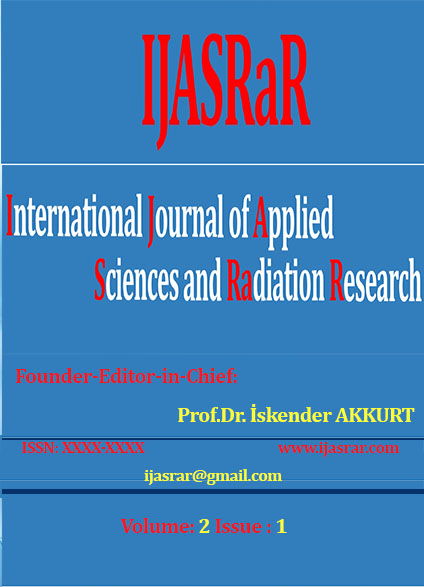Leveraging Machine Learning Analytics for Intelligent Transport System Optimization in Smart Cities
DOI:
https://doi.org/10.22399/ijasrar.38Keywords:
Generative AI, Solar thermal collector, Design optimization, Thermal efficiencyAbstract
Urbanization has intensified transportation challenges such as congestion, inefficiency, and safety risks. Traditional traffic management approaches often fail to adapt to dynamic urban conditions, leading to delays and environmental burdens. This paper explores how Machine Learning (ML)-driven Intelligent Transportation Systems (ITS) can optimize urban mobility by integrating predictive, adaptive, and data-driven solutions. Using models such as Long Short-Term Memory (LSTM) networks, Convolutional Neural Networks (CNNs), and reinforcement learning, ITS applications are analyzed in traffic flow prediction, adaptive signal control, smart parking, and AI-powered public transport scheduling. Real-world implementations in cities including Los Angeles, Barcelona, Singapore, and Dubai demonstrate the potential of ML-enabled ITS to reduce congestion, improve safety, and enhance sustainability. The paper also addresses critical challenges such as data privacy, infrastructure costs, and algorithmic fairness, while highlighting future research directions in federated learning, vehicle-to-everything (V2X) communication, and integration with autonomous vehicles. Findings underscore that ML-driven ITS is not only key to improving transportation efficiency but also a foundation for building sustainable smart cities.
References
[1] El-Tantawy, S., Abdulhai, B., & Abdelgawad, H. (2022). Multiagent reinforcement learning for adaptive traffic signal control. IEEE Transactions on Intelligent Transportation Systems.
[2] Zhang, Y., et al. (2023). Deep learning for traffic congestion prediction. Transportation Research Part C: Emerging Technologies.
[3] Author(s). (2023). Machine learning for smart cities: A comprehensive review. International Journal of Advanced Computer Science and Applications (IJACSA).
[4] BMW. (2020). Connected car: Its history, stages and terms. BMW.com. https://www.bmw.com/en/innovation/connected-car.html
[5] Mercedes-Benz Group. (2020). Networked with the surroundings: Car-to-X communication goes into se-ries production. Mercedes-Benz. https://group.mercedes-benz.com/innovation/case/connectivity/car-to-x-2.html
[6] Hawkins, A. J. (2022, February 22). Audi is bringing 5G connectivity to its vehicles in 2024. The Verge. https://www.theverge.com/2022/2/22/22945823/audi-verizon-5g-connectivity-2024-v2x
[7] Aeris. (2024). IoT on green: How Audi is using vehicle-to-infrastructure technology to predict light changes. https://www.aeris.com/resources/iot-on-green-how-audi-is-using-vehicle-to-infrastructure-technology-to-predict-light-changes/
[8] Hari Haran, L. (2018, October 10). V2X and V2V — A one way road to great business opportunities. Me-dium. https://medium.com/@ResourceLeaders/v2x-and-v2v-a-one-way-road-to-great-business-opportunities-3a898c291d9c
[9] Abuelsamid, S. (2018, April 16). Toyota has big plans to get cars talking to each other and infrastructure in the U.S. Forbes. https://www.forbes.com/sites/samabuelsamid/2018/04/16/toyota-launches-aggressive-v2x-communications-roll-out-from-2021
[10] Toyota Motor Corporation. (2020). Toyota automated driving white paper. https://amrd.toyota.com/app/uploads/2022/02/ATwhitepaper.pdf
[11] Crest Cadillac Inc. (2022). V2V communication. https://www.cadillacwisconsin.com/v2v-communication.htm
[12] Ford Media Center. (2018, September 17). Ford tests C-V2X technology for the first time on public roads in China. Ford Media Center. https://media.ford.com/content/fordmedia/fap/cn/en/news/2018/09/17/Ford_Tests_C-V2X_Technology_for_the_First_Time_on_Public_Roads_in_China.html
[13] Volkswagen Group Italia. (2024). CARIAD develops V2X technology to make roads safer. https://modo.volkswagengroup.it/en/mobotics/cariad-develops-v2x-technology-to-make-roads-safer
[14] Contechs. (2024, March). Volkswagen launches new AI company. https://www.contechs.com/blog/2024/03/volkswagen-launches-new-ai-company
[15] United States Environmental Protection Agency. (2021). Fast facts on transportation greenhouse gas emissions. US EPA. https://www.epa.gov/greenvehicles/fast-facts-transportation-greenhouse-gas-emissions
[16] FasterCapital. (2024). Shaping the flow: Best efforts for efficient traffic management. https://fastercapital.com/content/Shaping-the-Flow–Best-Efforts-for-Efficient-Traffic-Management.html
[17] Chehri, A., Sharma, T., Debaque, B., Duclos, N., & Fortier, P. (2021). Transport systems for smarter cities: A practical case applied to traffic management in the city of Montreal. In Sustainability Energy Build. (pp. 255–266). Springer. https://doi.org/10.1007/978-981-16-6269-0_22 DOI: https://doi.org/10.1007/978-981-16-6269-0_22
[18] Caburn Telecom. (2024). 14 top smart cities in the world. https://caburntelecom.com/top-smart-cities/
[19] Hassebo, A., & Tealab, M. (2023). Global models of smart cities and potential IoT applications: A review. IoT, 4(3), 366–411. https://doi.org/10.3390/iot4030017 DOI: https://doi.org/10.3390/iot4030017
[20] Wolniak. (2023). Smart mobility in smart city: Copenhagen and Barcelona comparison. Zeszyty Naukowe, 2023(172). https://doi.org/10.29119/1641-3466.2023.172.41 DOI: https://doi.org/10.29119/1641-3466.2023.172.41
[21] Seoul Metropolitan Government. (2019). Seoul, the world’s best e-government to a smart city. https://english.seoul.go.kr/seoul-the-worlds-best-e-government-to-a-smart-city
[22] Khan, M., Woo, M., Nam, K., & Chathoth, P. (2017). Smart city and smart tourism: A case of Dubai. Sus-tainability, 9(12), 2279. https://doi.org/10.3390/su9122279 DOI: https://doi.org/10.3390/su9122279
[23] Climate Laws. (2017). United Arab Emirates’ first long-term strategy (LTS). Climate Change Laws of the World. https://climate-laws.org/document/united-arab-emirates-first-long-term-strategy-lts_09cb
[24] UAE Ministry of Climate Change and Environment. (2017). National climate change plan 2017–2050. https://www.moccae.gov.ae/en/media-center/news/10/10/2017/ministry-of-climate-change-and-environment-organizes-media-briefing-on-uae-national-climate-change-plan-2017-2050.aspx
[25] Im, J., & Jang, S. (2022). Self-sufficiency of new administrative capitals (NACs) based on types and com-muting characteristics of citizens: Case study of Sejong. Sustainability, 14(20), 13193. https://doi.org/10.3390/su142013193 DOI: https://doi.org/10.3390/su142013193
Downloads
Published
How to Cite
Issue
Section
License
Copyright (c) 2025 International Journal of Applied Sciences and Radiation Research

This work is licensed under a Creative Commons Attribution 4.0 International License.


